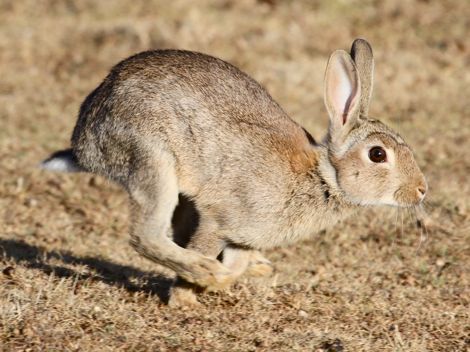Do you find that riding a bicycle brings out your most inspired thoughts on evolutionary biology and learned behaviour? Do world-changing paradigms in the nature-versus-nurture debate spring unbidden into your oxygen enriched mind? No, me neither.

Well not normally. Thing is, I did today observe that the rabbits and squirrels on my Thames-side cycle route were markedly less afraid of a wheeled me than a walking me. Not only did the rabbits take their time getting out of the way (doubtless some variant of the ‘frozen in the headlamps’ syndrome), but also hung around after I stopped. Squirrels behaved in a similar fashion, as did magpies (which as a species seem to spend a good 50% of their time on the ground).

It’s well known that animals associate threat or opportunity with the shape of a predator or prey. Good advice in lion country is never to squat down or bend over. Those actions make humans look like four legged prey to large cats, so any bending at the waist while in mountain lion territory is a no-no (as my wife twice reminded me this summer as I tied my shoelaces in the San Gabriel mountains of Southern California).
But how much of the rabbit’s behaviour is learned, and how much is in the genes? Over what timescales do these influences operate? Indeed, to be fashionable, should I not consider whether an epigenetic influence is at work here, whereby gene activating chemistry has been triggered in an earlier generation of rabbits and passed to Junior – grandad meets a bipedal human with shotgun say, rather than jump to the more conventional explanation of gene natural selection?
Actually I’m inclined to jump to the conventional explanation. Sat on a bike we no longer look human, and bicycles haven’t been around long enough (and/or in a sufficiently rabbit-unfriendly incarnation) to reflect in rabbit evolutionary traits. The association of threat with the shape of a two legged man is, I suggest, genetic. The rabbit population of England has been managed as a commodity for centuries (rabbits were husbanded by a Warrener no less), so plenty of time for natural selection to do its work. However, this is supposition, and to be properly scientific we would want greater confidence in our hypothesis that any epigenetic influence is small. That, regrettably, would require quite complex trials involving geographically isolated test parks and cyclists armed with shotguns.
It’s clearly been one of those days.
